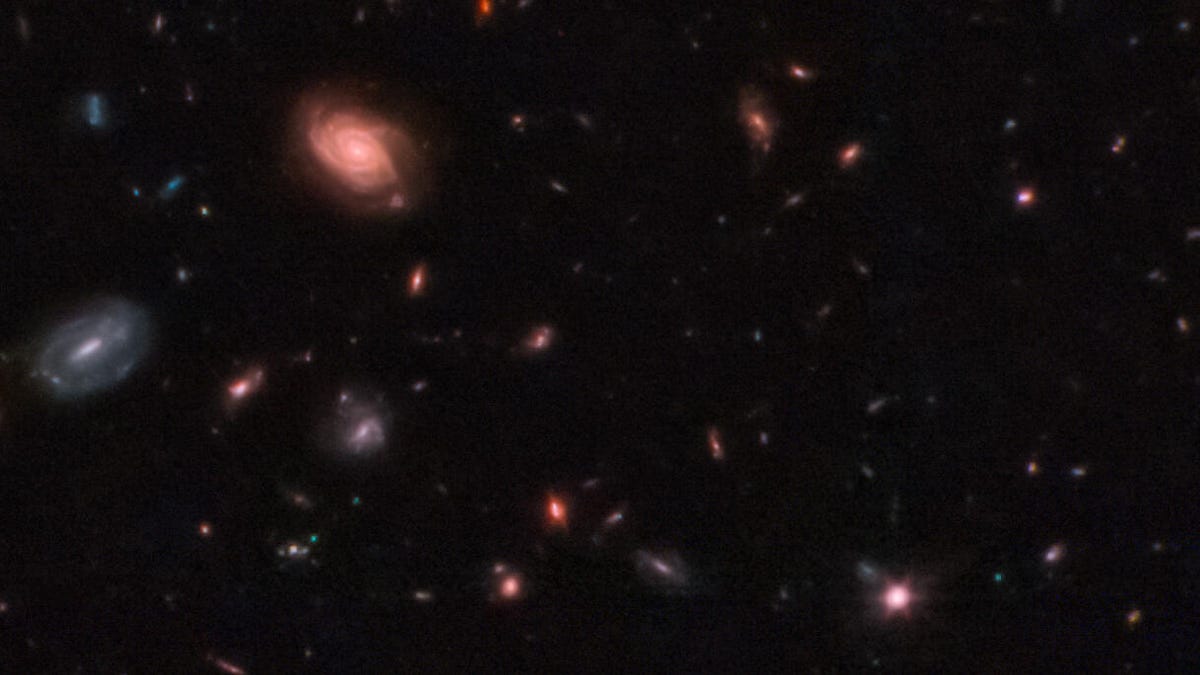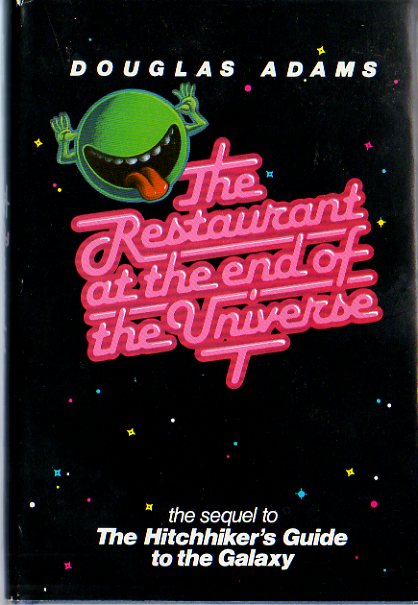
Posted on 08/08/2022 8:55:50 AM PDT by Red Badger

spiral galaxies and distant galaxies are visible against the black void of space A small portion of deep space observed by JWST.
NASA/STScI/CEERS/TACC/S. Finkelstein/M. Bagley/Z. Levay
Astronomers armed with early data obtained by the James Webb Space Telescope (JWST) are hunting galaxies that existed just a few hundred million years after the Big Bang.
Rohan Naidu, an astrophysicist based at Harvard's and Smithsonian's jointly operated Center for Astrophysics, and his colleagues have been particularly good at uncovering these cosmic relics.
Just a few days after the JWST's first images were beamed across the planet in July, Naidu and his collaborators dropped a paper that reverberated across the web, picking up a real head of steam on social media. Using data from the 'scope, the researchers announced that they'd discovered a candidate for the most distant galaxy ever seen, dubbed GLASS-z13. Then, not even a week later, a number of groups found candidate galaxies ever farther away.
It's not surprising, then, that we have yet another candidate.
In a pre-print paper, released on Aug. 5 and yet to undergo peer review, Naidu and colleagues have detailed another distant galaxy candidate, from one of JWST's early release science programs, known as CEERS-1749. It's an extremely bright galaxy that, if confirmed, would have existed just 220 million years after the Big Bang -- and it could also rewrite our understanding of the cosmos.
But there's a huge catch.
CEERS-1749 could be one of the most distant galaxies we've ever seen. Or it could be lurking much closer to home. Essentially, the data seems to indicate two possible places for the galaxy to be -- and we won't know which one is correct without a lot more observation. That's earned it the title of "Schrodinger's galaxy candidate" in the paper submitted to pre-print repository, arXiv, on Aug. 4.
So, how can a galaxy like Schrodinger (the name we're running with because it's way more fun than CEERS-1749) seem to be in two different places? It's all about redshift.
To determine how far away a galaxy lies, astronomers study wavelengths of light. Specifically, they're interested in a phenomenon of light known as redshift. In a nutshell, light waves leaving distant galaxies get stretched over time, shifting the waves down the electromagnetic spectrum and making them more, well... red. So, ultraviolet light leaving a galaxy like Schrodinger won't reach Earth as ultraviolet light. Instead, it will be redshifted down into the infrared, which is great for us because that's just the kind of light JWST searches for.
And JWST has various filters, looking at distinct wavelengths of infrared. In examining a galaxy like Schrodinger, you can flick through the wavelengths like you might flick through a photo album. On the first few pages -- less red wavelengths -- you won't see a thing. Then, as you turn through and the wavelengths become more red, the ghost of a galaxy appears. In the most redshifted wavelengths, at the back of the album, the galaxy is a clearly defined object.
Redshift is denoted by the parameter z and higher z values mean a more distant object. One of the confirmed most-distant galaxies discovered to date, GN-z11, has a z value of 11.09. In the case of Schrodinger, the research team state it could have a z value of around 17. That would mean this light is from a time some 13.6 billion years ago.
This would also mean we might need to rethink our models of how galaxies evolved in the earliest days of the universe -- galaxies from that long ago should not be this bright, at least according to the model we currently use to explain our cosmos.
But maybe we don't need to break physics just yet.
The team suggest there is good environmental evidence that Schrodinger's z value might be around 5, which would mean its light is about 12.5 billion years old. Other galaxies in the region around Schrodinger all lie at about this distance. It might even be that Schrodinger is a satellite galaxy of one of its more massive neighbors.
But wait, there's more! Another group of researchers also studied this exact same galaxy from the early release data, publishing their own results to arXiv on the same day. Jorge Zavala, an astrophysicist at ALMA Japan, and his team added to the JWST data with data from an Earth-based telescopes in the French Alps and Hawaii.
They came to the conclusion that Schrodinger might be an imposter masquerading as a high-redshift galaxy when it's actually a much closer, dusty galaxy undergoing rapid star formation.
The take-home message? Work on this perplexing galaxy candidate is incomplete. JWST has been able to study the intensity of the light emitted by Schrodinger, but we need more measurements. In particular, spectroscopy will allow astrophysicists to scrutinize its redshift more accurately. The only barrier now is time -- getting enough time on telescopes around the world to study Schrodinger and solve the puzzle.
except that t-shirt is backwards.
It should be blue and say it’s red if you run fast enough

There will be a line of cars and a Border Customs station.
Good one
Thats no longer a real important question, since the 'end of the internet' was discovered right here on FR.
How is it that the redshift is ambiguous? I thought the spectral signature enabled an unambiguous measure of the redshift.
Suppose it as a young Galaxy or Globular Cluster with many proto stars that had not yet accreted enough mass to ignite the nuclear fusion fire.
They would be glowing in intense infra-red radiation, thus giving the appearance of red shift, but not really being red-shifted....................

So what you’re saying is that they could see what color it is but not be able to discern precisely which elements were causing the glow? Because if they could see the spectral lines of a particular element, then it seems like they should be able to see what the spectral shift is.
Couldn’t a sophisticated enough device image infrared emitting clouds long before fusion reactions begin star light?
Disclaimer: Opinions posted on Free Republic are those of the individual posters and do not necessarily represent the opinion of Free Republic or its management. All materials posted herein are protected by copyright law and the exemption for fair use of copyrighted works.